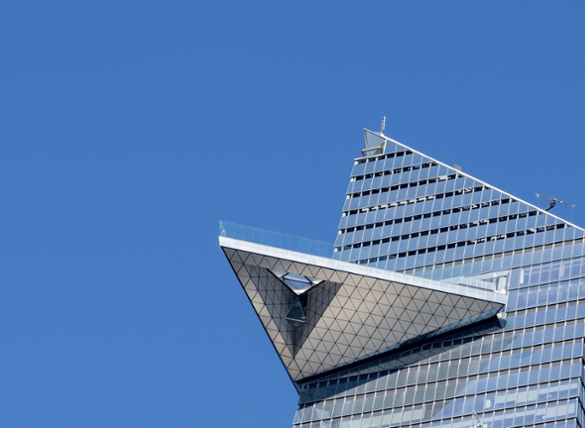Periods of substantial uncertainty offer an opportunity for individuals and professionals alike to gain an investment edge by lengthening their time horizon.
Recession Indicators: Amid Recovery, Inflation Scare Looms
Key Takeaways
- The path toward a full economic reopening advanced through a wintry February, with progress on vaccine distribution supporting a continued green expansionary signal for the ClearBridge Recession Risk Dashboard. While there were no signal changes, the dashboard saw notable improvement among Business Activity indicators.
- With reopening expected to spark a pickup in activity, fiscal and monetary policy still quite accommodative and the economy facing easier near-term price comparisons, investors are increasingly concerned about the risk of a sharp rise in inflation.
- Should higher prices emerge, investors will need to ascertain the drivers of inflation and recognise the difference between policy actions promoting a renormalisation from crisis measures and policy tightening in order to combat overheating.
Wider Vaccine Distribution Brings Reopening Closer
After a relatively mild January, winter reared its head in February bringing cold temperatures and ample snowfall across much of the United States. Despite this, the economic recovery forged ahead, fueled in part by a reduction in COVID-19 cases and hospitalisations that have led to an easing of social distancing guidelines in many areas. The vaccination campaign continues to ramp up and approximately 15% of the U.S. population has now had at least one dose, including many in the more vulnerable cohorts such as the elderly (nearly 50% of those 65+ have received at least one dose) and front-line workers.
With the vaccination campaign set to accelerate in March and April as more manufacturing capacity comes on-line and additional vaccines receive FDA emergency-use approval, investor attention has turned toward the reopening of the economy. The timeframe for reopening is accelerating relative to expectations one to two months ago, a positive for risk assets. Full-year consensus GDP expectations were revised higher by 80 basis points (4.1% to 4.9%) in February while expectations for 2021 S&P 500 Index earnings rose nearly $2.00 per share or just over 1%. Even before the economy begins to further normalise, economic momentum appears to be accelerating. The Citi Economic Surprise Index for the U.S. - a measure of how economic data is doing relative to expectations - has inflected higher in 2021 with data such as retail sales and durable goods orders recently coming in well ahead of consensus.
Exhibit 1: Citi Economic Surprise Index Trending Positively
.png)
Against this backdrop, it is not surprising to see a continued green expansionary signal from the ClearBridge Recession Risk Dashboard. The dashboard saw improvement beneath the surface, principally within the Business Activity section. Commodities are a standout in this segment with copper prices at their highest level in nearly a decade. Further strength in areas such as lumber and steel align with the bullish reading on economic health coming from copper. Two Business Activity indicators - Profit Margins and Truck Shipments - appear likely to improve to green signals in the coming months if recent trends hold.
Exhibit 2: ClearBridge Recession Risk Dashboard
.png)
With reopening likely to lead to a pickup in economic activity and both fiscal and monetary policy still quite accommodative, investors are increasingly concerned about the prospect for an overheating economy. Further, inflation expectations such as breakeven rates (the level of inflation implied by the pricing for Treasury Inflation˗Protected Securities relative to similar maturity Treasury bonds or notes) have been on the rise along with intermediate and long-term interest rates. There appear to be two potential drivers of higher prices in the coming months that could combine to cause an inflation scare.
Inflationary Pressure to Build in Near Term
The first force that will push up official inflation metrics is the calendar, as easy comparisons from a period of deflation in the spring of 2020 are lapped. As the economy ground to a sudden halt last spring, prices for many goods and services (except for perhaps toilet paper) declined. In the coming months, the year-over-year calculation will be based against this period of particularly weak pricing. Even if there were no further price increases, easy comps alone would push inflation up by 40 bps in the coming months to a level near the Federal Reserve’s 2% target. However, these easy comps will become more challenged over the summer compared to 2020 when inflation ticked up during the initial reopening from lockdowns. Thus, absent future price changes, inflation could fall well back below the Fed’s target before year end.
Nevertheless, inflationary pressure will build in the coming months as economic reopening allows consumers to return to activities such as travel (airlines in particular), giving way to rising prices as demand returns. This second force is consistent with the increase in inflation that occurred last summer with the initial reopening. However, consumers are likely to reallocate some of their spending away from areas that benefited from social distancing guidelines including home furnishings (larger ticket appliances in particular) where demand is likely to soften. This should put some downward pressure on prices. Still, the net effect is likely to be higher near-term inflation.
Exhibit 3: Fed’s New Framework.png)
Data as of November 30, 2020, latest available as of December 31, 2020. Source: Federal Reserve Bank of St. Louis, BEA, Bloomberg. Personal Consumption Expenditures (PCE) excluding food and energy.
Putting this together, the path toward an inflation scare comes into view. If reopening-driven price increases occur at the same time as easy comps are being lapped, inflation could rise meaningfully above the Fed’s 2% target. While Fed Chair Jay Powell has made it clear that the Fed is willing to tolerate a modest overshoot in order to make up for past periods where inflation was below target, it remains to be seen how the Fed would respond to a substantial overshoot. Importantly, Powell has stressed that transitory inflation would be less of a worry, which could give the Fed a path to look through rising prices for some period of time. However, higher inflation is likely to test the Fed and investors at some point, particularly with financial markets pricing an initial rate hike to happen by early 2023.
It will be important for investors to try and ascertain the drivers of inflation should higher prices emerge. Further, investors will need to recognise the difference between policy actions that are steps toward a renormalisation from emergency/crisis measures and policy tightening in order to combat overheating, especially if they are taken during or following a period of higher inflation. Neither of these will be easy tasks in the months ahead. We will be closely monitoring incoming data for any signs that the inflation debate is clearly breaking in one way or the other, and plan on continuing to explore these issues as they evolve.
Related Perspectives


